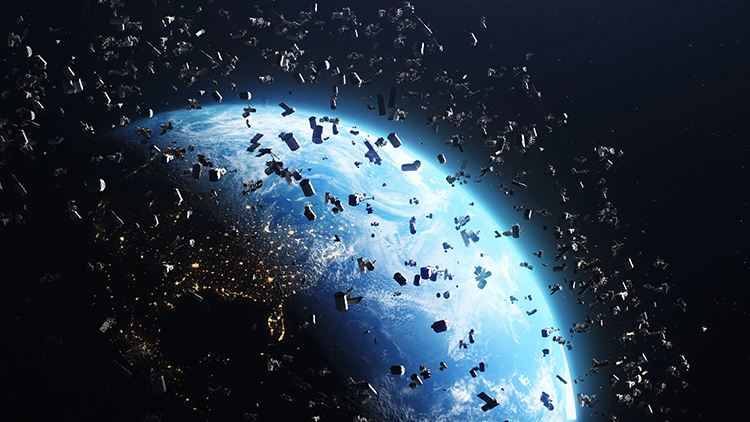
University of Mississippi law expert says mysterious object found on Australian coast won’t be the last space junk to fall
A metal object recently found on the coast of Western Australia made international news before it was identified as likely part of a rocket, but University of Mississippi law professor Michelle Hanlon said this object – and others like it – are only the beginning of our reckoning with deorbiting space debris.
With the onslaught of companies and countries launching satellites and rockets into outer space, governments must contend with the prospect of falling space debris hitting property or people, said Hanlon, director of the UM Center for Air and Space Law and co-founder and president of For All Moonkind Inc.
“This piece – it’s been identified as space junk – is the beginning of a new deluge,” she said. “The number of objects in orbit around our planet is growing every day. We’ve got to get used to seeing more and more stuff like this.”
Two international laws, Article 7 of the Outer Space Treaty and the Convention on International Liability for Damage Caused by Space Objects, dictate how governments handle the deorbiting of space junk and the liability of damage caused by falling spaceborne objects.
“What both of these laws say is if you have a space object and it does any harm to any person on Earth, you are absolutely liable,” Hanlon said. “If you do damage on Earth, you are liable. Period.”
The object found last week, however, has no clear markings indicating its country of origin, complicating the issue, she said.
“We got really lucky with this one because it landed in the ocean,” Hanlon said. “It could have landed on somebody’s house. What we’re seeing today with this object is we don’t know who’s responsible for that object or who would be liable if that object caused damage.
“Unless you see a flag right on it, who decides who pays? This is not an unusual occurrence; it’s more unusual that we aren’t able to identify it.”
Most falling space debris that will not disintegrate upon reentry is directed to Point Nemo, a point in the Pacific Ocean farthest from land and where the closest human beings are in the International Space Station, Hanlon said. Some countries, such as China, make no effort to redirect falling space debris, which can lead to dangerous objects deorbiting and crashing to Earth.
While redirecting the debris to this spot may lower the likelihood of danger to life or property, there is little study into the ecological impact of this space junk dump site, Hanlon said.
“What effect do these things have on marine life?” she said. “As the amount of orbital debris continues to grow, that’s something we have to contend with, both in terms of our orbital environment and our environment on Earth.”
By Clara Turnage




